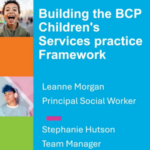The government has recently consulted on a new white paper that will focus on care outside hospitals and the integration of social and health services. The paper is expected early next year. In 2001, intermediate care was heralded as the solution to many of the system’s problems such as the lack of integration. It was seen as a means of freeing up hospital beds and reducing the need for long-term care by providing older people with rehabilitation and short-term support to stay independent.
Developed in the absence of an evidence base, the jury has been out on intermediate care for some time. However, the national evaluations of intermediate care and other studies are starting to report their findings. (1)
A further, smaller study by Help the Aged has looked specifically at intermediate care from older people’s perspective and has implications for the forthcoming white paper. (2)
The study was carried out as part of the Help the Aged intermediate care programme for older people. The programme operated in seven sites across England between 2001-4 and piloted different ways of including volunteers and the voluntary sector in NHS and social services intermediate care. In one of the sites, for example, a voluntary sector co-ordinator was put alongside the hospital intermediate care team, and was able to provide quick access to an additional range of services such as volunteer support and benefits advice.
In each site, a researcher tracked the case histories of five older people, conducting in-depth interviews to hear what they thought about the care and support they received. In total, 35 older people were interviewed, plus a large number of other stakeholders such as professionals and family members.
The older people we interviewed were positive about their experiences of intermediate care. There was evidence of practice that was person-centred and multi-professional. Although older people were not party to single assessment, goal setting, or clearly planned outcomes for rehabilitation, there was much evidence that promoting independence and active ageing had permeated the culture of intermediate care. One older woman described how she had not been out of the house for 12 months until she received support from the intermediate care team and reflected how “nobody else had bothered that way”.
Intermediate care was viewed as a lifeline and this was especially the case when its support included input from volunteers. Older people particularly appreciated that the volunteers could spend time getting to know them personally, and would tailor activities accordingly, for example, going on a visit to the theatre or garden centre. From older people’s perspectives, intermediate care was associated with two chief outcomes: “getting straightened out” and being able to keep going.
Because intermediate care was viewed as a lifeline, many older people were upset when their support was withdrawn (intermediate care can only be provided for up to six weeks). These concerns were often well-founded as once it ended people were often left with further needs. Feelings of isolation and decline were common and these were assumed by the older person to be a normal part of the ageing process. One older woman described how she had made good progress while receiving intermediate care, but when it had not been sustained she described herself as “crumbling away”. After intermediate care nobody was around to challenge this.
The accounts of older people in the study strongly suggest that six weeks is too tight a time for recovery. In most cases it appeared that what was needed after six weeks was some form of low level continuing care, not always expensive care packages, just, “someone to expect each day”.
There is growing research evidence to support this conclusion. According to the major study by Young and colleagues we should be concerned that new intermediate care services are being planned and delivered as short-term, brief contact, services. (3) The gradual decline and high mortality observed in the patients in their research suggested that longer-term support with repeated contacts might be a more appropriate service model for frail older people.
What is clear is that older people found the support provided by intermediate care highly satisfactory, in many respects a blueprint for care outside hospital. According to Stevenson, to sustain well-being and independence beyond six weeks, mainstream care services need to become far more responsive to people’s changing needs. (4)
Ideally, we would also suggest that this increased flexibility needs to sit on a tier of continuous support, literally, guaranteeing older people who are disabled, housebound or isolated but who are assessed as having “low” level support needs someone to expect (in person or by telephone) each day if they so wish. Here, the potential of the voluntary and community sector is enormous. However, to make a reality of this there will need to be reform of the ways in which the sector is funded. Health and social care commissioners often assume that the voluntary and community sector provides the “icing on the cake”. Our study confirms that for many older people it can be the jam and the sponge as well.
A further consequence of the lack of continuing care is that service integration becomes very difficult when input is short term. A key objective of the Help the Aged programme was to deliver an integrated intermediate care service, in which the voluntary sector was seamlessly interwoven alongside the contributions of other health and social care professionals.
However, a significant finding of this study was the way in which the voluntary sector would often be involved only at the point at which NHS/social services intermediate care was about to be withdrawn. Among NHS staff this was often a conscious strategy in order to extend the timeframe of care from six to 12 weeks. In essence, the Help the Aged projects acted as a further “step-down” in a pathway that included a hospital stay, six weeks’ statutory (NHS/social services) intermediate care and then a further six weeks of voluntary intermediate care.
However, given the level of disability and illness among the older people interviewed, a risky corollary of this purposefully “disintegrated” pathway was that volunteers could find themselves working in isolation from the wider intermediate care team when a greater degree of integration and supervision may have been better.
The overall implication is that safer or less risky practices lie in ensuring that procedures for “care management” and “nursing process” reviews extend far deeper into the intermediate care pathway, even though the only remaining input may be the support provided by the volunteers. However, it is clear that any such recommendation will pose serious challenges to a system that is already overstretched and indeed, it questions the very concept of intermediate care as a time-limited entity.
Training and Learning
The author has provided questions about this article to guide discussion in teams. These can be viewed at www.communitycare.co.uk/prtl and individuals’ learning from the discussion can be registered on a free, password-protected training log held on the site. This is a service from Community Care for all GSCC-registered professionals.
Abstract
The authors describe the findings of a research project on older people’s experiences of intermediate care. It suggests the forthcoming white paper on care outside hospital will need to address how more intensive short-term support, such as that provided by intermediate care, can be cushioned by a tier of low-level continuous voluntary sector support which guarantees older
people “someone to expect each day”.
References
- See www.prw.le.ac.uk/intcare
- J Manthorpe, et al (forthcoming) Older People’s Experiences of Intermediate Care: Building a Case for Continuous Care, Help the Aged
- J Young et al, “A prospective study of frail older people before the introduction of an intermediate care service”, Health & Social Care in the Community, 13(4), 307-312, 2005
- J Stevenson, Intermediate Care – How Will it Contribute to Meeting Current National Priorities and Supporting Local Service Redesign?, www.changeagentteam.org.uk, 2005
Contact the Author
michellecornes@aol.com
Michelle Cornes is a research fellow in the department of social work at the University of Central Lancashire and has worked as a manager in the voluntary sector.
Jill manthorpe is professor of social work at the social care workforce research unit, King’s College, London



 Bournemouth, Christchurch and Poole
Bournemouth, Christchurch and Poole  Hampshire County Council
Hampshire County Council  Oxfordshire County Council
Oxfordshire County Council  South Gloucestershire Council
South Gloucestershire Council  Wokingham Borough Council
Wokingham Borough Council  Harnessing social work values to shape your career pathway
Harnessing social work values to shape your career pathway  Webinar: building a practice framework with the influence of practitioner voice
Webinar: building a practice framework with the influence of practitioner voice  ‘They don’t have to retell their story’: building long-lasting relationships with children and young people
‘They don’t have to retell their story’: building long-lasting relationships with children and young people  Podcast: returning to social work after becoming a first-time parent
Podcast: returning to social work after becoming a first-time parent  Workforce Insights – showcasing a selection of the sector’s top recruiters
Workforce Insights – showcasing a selection of the sector’s top recruiters  Free CPD on Parkinson’s for health and social care staff
Free CPD on Parkinson’s for health and social care staff 

 Facebook
Facebook X
X LinkedIn
LinkedIn Instagram
Instagram
Comments are closed.